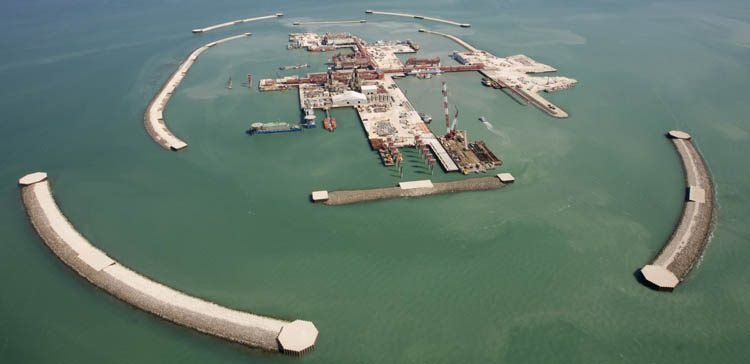Kazakh Kashagan Oil Field to Produce Up to 400,000 b/d Early June
Kazakhstan’s energy ministry expects crude output at the giant Kashagan field in the Caspian Sea to reach 370,000-400,000 b/d in early June, with the project producing additional 3 million barrels above an initial plan in 2019 due to an early restart after major maintenance work.
Production at Kashagan was restarted Sunday, 10 days ahead of the initial plan, with output reaching 70,000 b/d the same day, the ministry said Monday.
“Thus, the outage was completed within 35 days, instead of the planned 45. This alone will allow us to produce 3 million barrels of oil more than the planned volume this year,” it said in a statement.
The field was shut down on April 14 and the initial plan envisaged the maintenance work continuing through May 29, it said.
“Work to increase production to full capacity will continue, and in early June Kashagan should reach production levels of 370,000-400,000 b/d due to the work carried out during the maintenance,” it said.
Kashagan is one of the three major projects in Kazakhstan, alongside Tengiz and Karachaganak, that jointly account to over two thirds of the country’s liquids output. Its crude is exported via the CPC pipeline to the Russian Black Sea port of Novorossiisk and from there to international markets. CPC Blend is a light grade with a gravity of around 44-45 API and a sulfur content of 0.5%-0.6%.
Kazakhstan’s crude and condensate production fell by 270,000 b/d or 14.8% month on month to 1.56 million b/d in April due to the maintenance at Kashagan. This helped the country comply with its commitment to cut production by 40,000 b/d from its November 2018 level of 1.9 million b/d under the latest OPEC/non-OPEC crude production agreement.
Kazakh energy minister Kanat Bozumbayev said earlier this year that average production over the first six months of 2019 would be in line with Kazakhstan’s commitment to reduce output to 1.86 million b/d, forecasting that lower output in March, April and May would offset higher output in January, February and June.
— Nadia Rodova, nadia.rodova@spglobal.com
— Edited by Jonathan Dart, newsdesk@spglobal.com











